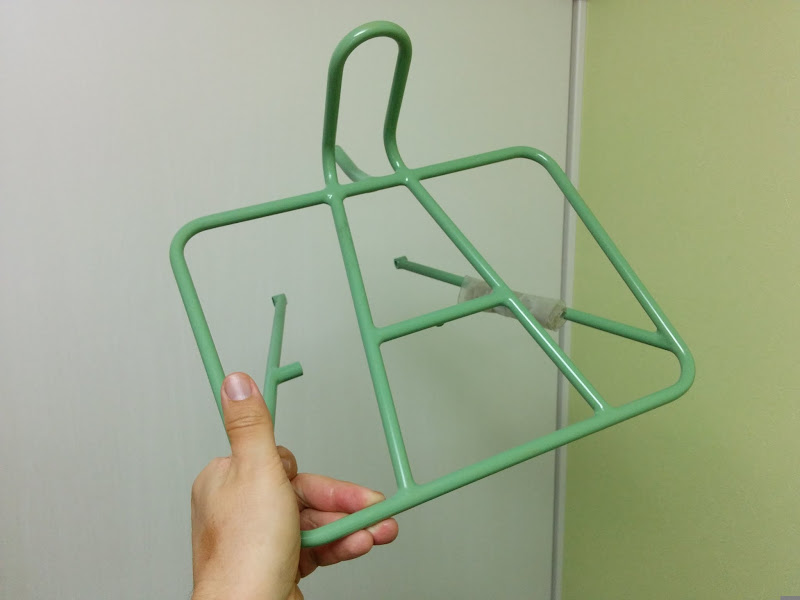With the arrival of my Elephant Bikes National Forest Explorer frame and fork still a few months away I have started collecting parts for building up the complete bike once the frame arrives. The first part was a new Brooks saddle, which I received as a birthday gift from my son.
Next came the Spa Cycles TD-2 Touring Triple cranks, which at £75 (about 15,000 yen including shipping to Japan) were excellent value:
The ramps and pins should ensure it works with Shimano STI shifters. The cranks are made by Sugino in Japan from 6061 aluminium. It looks the same as the Sugino Alpina 2 triple, but without the Sugino logo. The Zicral (7075-T6) chain rings are branded for Spa Cycles but perhaps made by Stronglight. I chose the 46/34/24 chain ring combination as it will give me my ideal gear ratios when combined with a 10 speed Ultegra 12-30 cassette (from 21.0 to 100.7 gear inches). It doesn’t exceed to 22T capacity of Shimano triple front derailleurs (Shimano 105 FD-5703, Shimano Ultegra FD-6703).

This is the Haulin’ Colin porteur rack powder-coated in Elephant NFE green (RAL 6021). I was surprised how light it was when I received it. Here is how Fred Blasdel uses his:

I’ve ordered my 650B wheels from GS Astuto. They will be built using Velocity Blunt SL rims, a Shutter Precision PL-8 dynamo hub at the front and a White Industry CLD rear hub.
My first choice of tyres will be the Compass 650B x 42 Babyshoe Pass Extralight tyres.
The front derailleur will be an IRD Alpina-D Triple, the rear derailleur an Ultegra RD-6700-GS (medium cage).
Other likely components:
- B&M Lumotec IQ Cyo Premium senso plus (head light)
- B&M Lumotec Secula Plus (rear light)
- Nitto Randonneur handle bars
- Shimano 105 triple 5703 shifters
- TRP Hy/Rd hydro-mechanical disc brakes
- Shimano UN55 square taper bottom bracket (113 mm)
- Shimano PD-M520 pedals
- Stem – TBD
- Head set – TBD
- Seat post – TBD
- Mudguards – TBD
One comment on the styling of the bike. The script font used for the model name on the top tube is more than a nod to the font used by the US Forest Service on their park signs and in their publications.

However, the NFE frame colour is little lighter than the colour US Forest Service vehicles are painted in:
U.S. Forest Service (Federal Standard 14260)
versus
National Forest Explorer (RAL 6021)
See also:
Elephant Bikes NFE Build (Tokyo International Cyclists)
Elephant Bikes NFE Goes 11 Speed (with OX601D and hydraulic disc brakes
